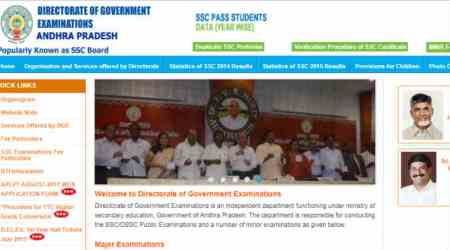 Finance Minister Sudhir Mungantiwar and MoS Deepak Kesarkar give final touches to the state Budget on Thursday. Ganesh Shirsekar
Finance Minister Sudhir Mungantiwar and MoS Deepak Kesarkar give final touches to the state Budget on Thursday. Ganesh Shirsekar
Alarmed by the steep decline in the growth rate in agriculture and allied sectors, the state government plans to push more reforms by raising capital investments by up to 25 per cent for agro-infrastructure and evolving a better price mechanism to accomplish its target of doubling farm production and income by 2022. The Economic Survey 2016-17 has predicted a (-) 8.3 per cent growth rate during 2017-18 in agriculture and allied sectors due to less rainfall (84.3 per cent of normal rains).
In 2017, sowing in the kharif season was done on 150.45 lakh hectares of land. The production of cereals is projected to decline by 4 per cent, pulses by 46 per cent, oilseeds by 15 per cent and cotton by 44 per cent. However, sugarcane production will increase by 25 per cent. Under rabi, the area of crop is 46.88 lakh hectares. During 2017-18, production of cereals will decline by 39 per cent, pulses by 4 per cent and oilseeds by 73 per cent over the previous year (2016-17), the report states.
The state received only 84.3 per cent of normal rainfall during last year’s monsoon. Of 355 talukas (excluding talukas in Mumbai city and Mumbai suburban districts) in the state, 147 received deficient, 146 normal and 62 excess rainfall. The area under horticulture crops is 15.22 lakh hectares and production is expected to be 207.54 lakh MT as against area of 16.73 lakh hectares and production of 219.93 lakh MT during 2016-17.
The reason cited for the decline in the agriculture and allied growth rate and production is deficient rainfall coupled with smaller land holdings, which has led to higher expenditure and lower production and income for farmers. Over the years, the state’s average operational land holding size has shrunk from 4.28 hectares to 1.44 hectares. Agriculture and water management expert Madhav Chitale said, “The government should move from progressive to aggressive strategy to push reforms in the agriculture and allied sectors.”
While stressing that overall food production growth should not be a cause of concern, he said, “The government will have to focus on better price mechanism for the farm produce.”
Citing the example of Europe, he said, “Subsidies in the agriculture sector helps both higher production and income. When we talk of decline in the agriculture and allied sector, it is in relative terms compared to surplus production of foodgrain and production in the previous year where monsoon was exceptionally good. Yet, corrective measures enforced can bring better results and higher growth rate in the sector.”
With small and marginal farmers accounting for 78 per cent of the total 1.36 crore farmers, the state government has decided to extend the group farming projects across 40,913 villages. A group of 20 farmers with cumulative land holding not exceeding 100 acres would be provided subsidies up to Rs 1 crore for group farming.
Taking ahead the campaign of Unnat Sheti and Samruddhi Shetkari initiated from kharif 2017-18, the objective is to double the farmers’ income and production by 2022. The scheme envisages increasing production in major crops and higher participation of farmers in crop insurance to help them cope with crop loss due to natural calamity.
The Economic Survey has pointed that flagship project Jalyukta Shivar has yielded positive results and would be continued to make the remaining 6,000 villages out of a total 25,000 drought-free by 2019. In 2016-17, 5,291 villages were made water neutral with 1.51 lakh works with expenditure of Rs 2,235 crore. Whereas, the first phase of farm ponds with target of 1,12,311 has seen completion of 60,496 farm ponds.
For all the latest India News, download Indian Express App

























